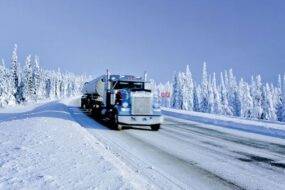Canadian winters can be brutal, and Prepare Your Car needs to be ready for the challenge. From icy roads to heavy snowfall, your vehicle will face harsh conditions. To ensure your safety and the longevity of your car, proper winter preparation is essential. In this guide, we’ll walk you through the steps to winterize your car and equip you with valuable tips for driving in winter conditions.
Essential Winter Car Care Checklist
Before the first snowflake falls, it’s crucial to give your car a thorough checkup. Here are the key areas to focus on:
Tires: Your Vehicle’s Foundation
Winter Tires: The most significant investment you can make for winter driving safety is a set of winter tires. These tires are specifically designed to grip icy and snowy roads, providing superior traction and control.
Tire Pressure: Cold temperatures can affect tire pressure, so check it regularly and maintain the recommended levels.
Tire Tread: Ensure your tires have adequate tread depth. Worn-out tires can significantly reduce traction.
Battery: The Heart of Your Car
Battery Health: Winter weather puts extra strain on your car’s battery. Have it tested to ensure it can handle the cold temperatures.
Battery Cables: Inspect the battery cables for corrosion and tighten if necessary.
Fluids: Vital for Performance
Coolant: Check the coolant level and ensure it’s mixed with the correct antifreeze-to-water ratio for your climate.
Windshield Washer Fluid: Switch to winter-grade windshield washer fluid to prevent freezing.
Oil: Ensure the engine oil is appropriate for winter conditions. Consult your owner’s manual for the recommended oil viscosity.
Lights and Wipers: Essential Visibility
Headlights, Taillights, and Brake Lights: Verify that all lights are functioning correctly.
Wiper Blades: Replace worn-out wiper blades with winter-specific ones designed to handle ice and snow.
Heating and Defrosting Systems
Heater and Defroster: Test the heating and defrosting systems to ensure they work efficiently.
Air Filters: Clean or replace the cabin air filter for optimal heating and air quality.
Emergency Kit: Be Prepared
Assemble a Kit: Create an emergency kit containing essential items like blankets, jumper cables, a flashlight, first-aid kit, non-perishable food, water, and a shovel.
Location: Store the kit in an easily accessible location in your car.
Winter Driving Tips
Once your car is winter-ready, it’s essential to adopt safe driving practices:
Increase Following Distance: Maintain a safe following distance to allow for increased stopping distances on icy roads.
Gentle Acceleration and Braking: Avoid sudden stops and starts. Accelerate and brake gradually.
Use Low Gears: When driving uphill, use a lower gear to maintain traction.
Avoid Cruise Control: Disable cruise control in winter conditions for better control.
Clear All Windows: Before driving, remove all snow and ice from windows, mirrors, and lights.
Beware of Black Ice: Black ice is transparent ice that can be difficult to see. Exercise extra caution in shaded areas.
Slow Down: Reduce your speed in winter conditions to give yourself more time to react.
Plan Your Trips: Check weather conditions before heading out and allow extra time for your journey.
Additional Winter Car Care Tips
Undercarriage Protection: Consider applying an undercoating to protect your car’s undercarriage from road salt and corrosion.
Car Cover: If you store your car indoors, use a car cover to protect it from dust and moisture.
Regular Maintenance: Continue with regular maintenance checks throughout the winter.
By following these guidelines, you can significantly improve your car’s performance and safety during the harsh Canadian winter. Remember, preparation is key to a safe and enjoyable winter driving experience.







